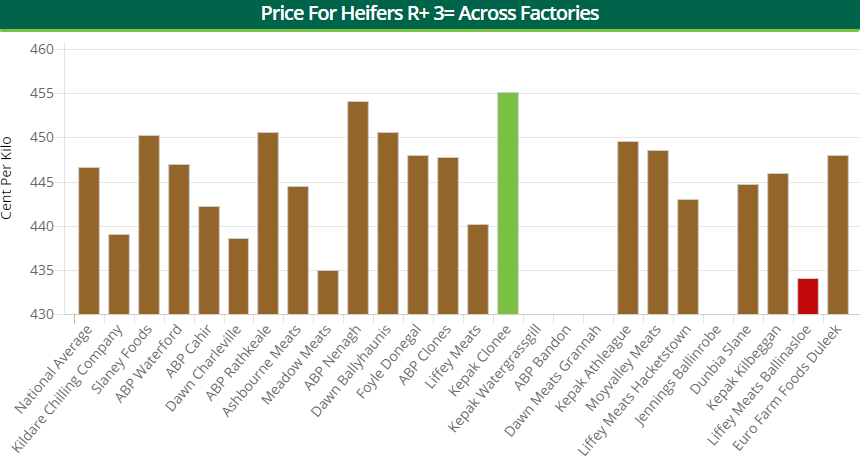During the week ending May 27, the number of cattle processed in Department of Agriculture approved beef plants increased by 632 head and amounted to 31,829 head.
Early quotes for this week suggest that the majority of beef processors are continuing to operate off base quotes of 420c/kg for steers and 430c/kg for heifers.
This week, procurement managers have noted that cattle supplies will be adequate – given the four-day working week ahead.
During the week ending May 27, in-spec, R+3= heifers made a top price of 455.12c/kg, while the average price paid stood at 446.69c/kg.
Furthermore, a top price of 447.42c/kg was achieved for R+3= steers; the average price paid for these animals stood at 434.99c/kg.
Moving to the cow trade, it has been mooted – in recent days – that cow prices have eased slightly in some plants.
Beef buyers are offering 330-350c/kg for P-grade cows; negotiations are starting at 340-350c/kg for O-grades and 370c/kg for R-grade types.
In addition, U-grading cows are selling anywhere from 380c/kg upwards. These prices depend on the location and demand of individual processing plants.
During the week ending May 27, O=3= cows made a top price of 375.01c/kg, while the average price paid stood at 365.42c/kg.
Cattle Supplies
Figures from the Department of Agriculture show that the total kill for the week ending May 27 stood at 31,829 head – an increase of 1.4% on the previous week’s total.
This rise was driven by increases in the numbers of young bulls processed, as spring-2017 born bulls became fit for slaughter. The number of these animals slaughtered increased by 474 head.
During the week ending May 27, the number of steers and heifers processed also increased; supplies of these animals were up by 35 head and 447 head respectively.
However, aged bull and cow throughput fell during the week ending May 27, with supplies down by 60 head and 167 head respectively.
- Young bulls: 3,871 head (+474 head or +12.2%);
- Bulls: 789 head (-60 head or -7%);
- Steers: 11,252 head (+35 head or +0.3%);
- Cows: 6,881 head (-167 head or -2.4%);
- Heifers: 8,246 head (+447 head or +5.4%);
- Total: 31,829 head (+632 head or +2.0%).
Year-on-year supplies
Over 690,000 cattle have been slaughtered in Ireland so far this year, official data shows. Figures taken from the Department of Agriculture’s beef kill database show that some 692,212 cattle have been processed up to the week ending May 27.
When compared to the corresponding period in 2017, that’s an increase of 21,057 head or 3.1%.
In terms of throughput, the combined steer and heifer kill accounted for 62.8% of all of the cattle slaughtered in Ireland between January 1 and May 27, 2018.
Some 237,223 steers and 198,007 heifers have been slaughtered in approved beef export plants this year; that’s a combined jump of 9,768 head.
In addition, there has been an increase in cow slaughterings; some 145,371 cows have been slaughtered this year – an increase of 3,642 head on the corresponding period in 2017.
Furthermore, there has been an increase in the number of aged bulls and young bulls processed. Aged bull throughput has jumped by 1,730 head and young bull supplies are up by 3,383 head.
- Young bulls: 90,623 head (+3,383 head or +3.9%);
- Bulls: 12,587 head (+1,730 head or +16%);
- Steers: 237,223 head (+11,362 head or +0.6%);
- Cows: 145,371 head (+3,642 head or +2.6%);
- Heifers: 198,007 head (+8,406 head or +4.4%);
- Total: 692,212 head (+21,057 head or +3.1%).





